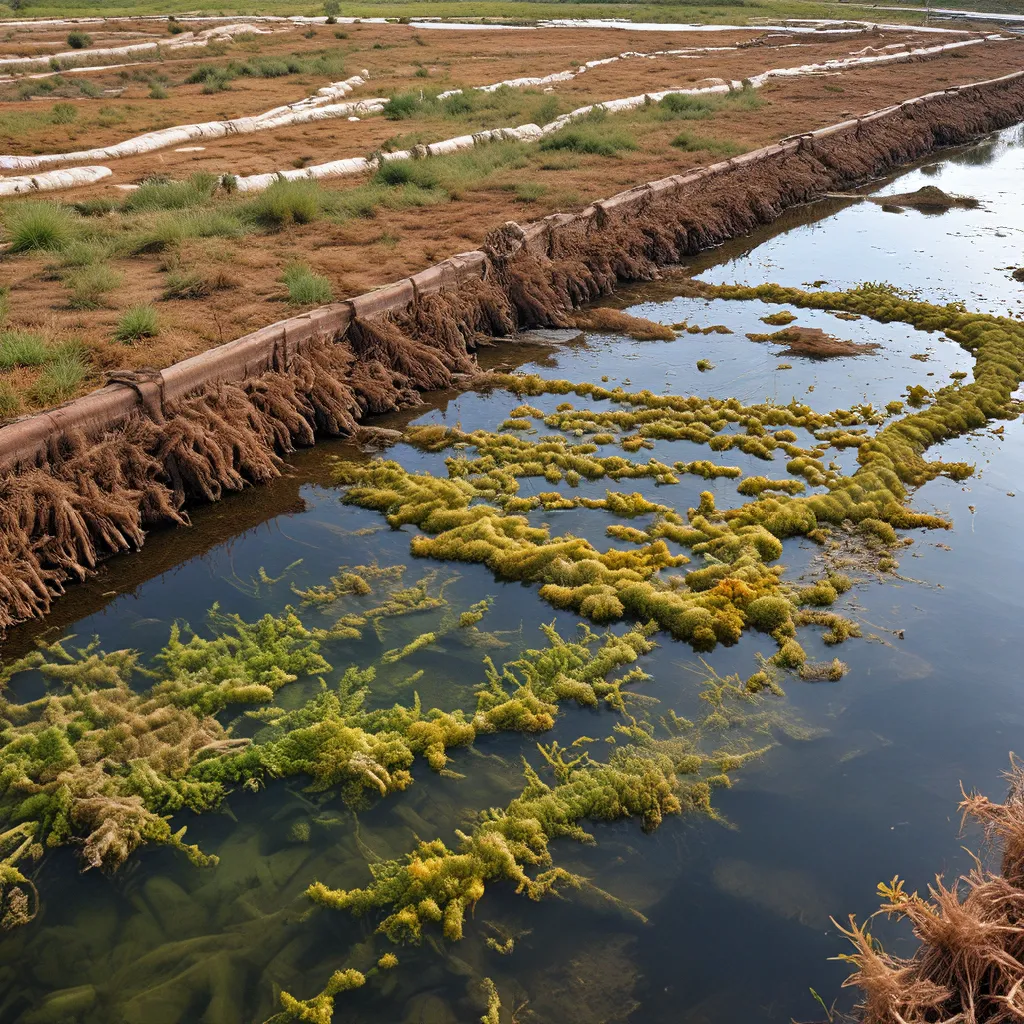
In the ever-evolving world of environmental preservation, the treatment of wastewater has become a critical focus for researchers and industry leaders alike. As the global population continues to surge, the need for innovative and sustainable solutions to combat the rising tide of industrial and municipal waste has never been more pressing. Enter the realm of biofilm-based technologies – a promising frontier in the quest for cleaner, more efficient wastewater management.
Unraveling the Power of Biofilms
Biofilms are essentially communities of microorganisms that adhere to a surface, whether it’s a living or inert material, in an aqueous environment. Unlike their free-floating counterparts, biofilm-forming bacteria possess a remarkable ability to adapt and thrive in even the harshest of conditions. Their unique gene expression patterns, regulated by intricate quorum sensing mechanisms, allow them to effectively sorb and metabolize a wide range of organic contaminants and heavy metals.
Emerging research has shown that biofilm-mediated remediation is an economical and environmentally friendly choice for tackling wastewater challenges. As opposed to traditional treatment methods, biofilms offer a protective environment for the microorganisms, enabling them to compete for scarce nutrients and exhibit greater tolerance to pollutants.
Harnessing Biofilm Superpowers
The versatility of biofilms extends far beyond their resilience. They are being increasingly employed in various bioreactor configurations to accelerate the breakdown of a diverse array of environmental contaminants, from nitrate and bromate to petroleum waste.
One particularly promising approach is the moving-bed biofilm reactor (MBBR), which utilizes freely floating biofilm carriers to maximize the available surface area for microbial growth. These carriers not only provide a protective shelter for the biofilm but also facilitate effective mixing within the reactor, promoting the liberation of volatile acids and the distribution of nutrients.
Fluidized-bed biofilm reactors (FBBRs), on the other hand, leverage the power of suspended and fluidized media particles to enhance mass transfer and increase the active surface area for microbial attachment. This configuration has demonstrated its effectiveness in removing oxidized pollutants, particularly in the context of municipal wastewater treatment.
Unlocking the Potential of Microbial Fuel Cells
The marriage of biofilm technology and electrochemistry has given rise to the innovative microbial fuel cell (MFC) approach. These unique devices harness the metabolic capabilities of electroactive biofilms to generate electrical current while simultaneously treating organic and inorganic waste streams.
MFCs work by leveraging the unique interactions between the microorganisms in the anodic chamber and the electrodes. As the microbes oxidize organic matter, they release electrons that are then captured by the anode, creating a flow of electricity. Meanwhile, the cathodic chamber serves as the site for the reduction of oxygen, completing the circuit.
Recent advancements in MFC technology have led to significant improvements in power density, making them an increasingly viable option for wastewater treatment and energy generation. However, scaling up these systems from the laboratory to real-world applications remains a persistent challenge that researchers continue to tackle.
Taming the Complexities of Biofilm-Based Systems
As with any emerging technology, the implementation of biofilm-based wastewater treatment is not without its hurdles. Membrane fouling, clogging, and the high energy demands associated with air scouring and membrane maintenance have posed significant barriers to the widespread adoption of membrane biofilm bioreactors (MBBRs).
Addressing these challenges requires a multifaceted approach, including the development of cost-effective membrane materials, optimization of operating parameters, and the exploration of innovative reactor configurations. The Alpha Wastewater team, for instance, has been at the forefront of designing biofilm-based systems that maximize treatment efficiency while minimizing energy consumption and maintenance requirements.
Embracing the Future of Wastewater Treatment
As we look to the future, the potential of biofilm-based technologies to revolutionize wastewater treatment is undeniable. Multispecies biofilms, with their enhanced remediation capabilities and resistance to environmental stressors, hold the promise of even more efficient and robust wastewater treatment solutions.
Moreover, the integration of biofilm processes with other emerging technologies, such as algal biofilms and hybrid systems, offers the potential to unlock synergistic benefits, from nutrient recovery to the production of valuable bioproducts.
The journey towards a cleaner, more sustainable future is far from over, but the rise of biofilm-based technologies has ushered in a new era of hope. As researchers and industry leaders continue to push the boundaries of what’s possible, I can’t help but feel excited about the transformative impact these innovations will have on our world.
Conclusion: Diving into the Depths of Biofilm-Driven Innovation
The future of wastewater treatment lies in the intricate world of biofilms – a realm teeming with untapped potential and innovative solutions. From the resilient moving-bed biofilm reactors to the cutting-edge microbial fuel cells, these microbial powerhouses are transforming the way we approach environmental remediation.
As I delve deeper into this captivating field, I’m constantly reminded of the importance of embracing new technologies and the relentless drive for progress. The challenges may seem daunting, but with the tireless efforts of researchers and the commitment of industry leaders like Alpha Wastewater, I’m confident that we can harness the true potential of biofilm-based technologies to create a cleaner, more sustainable future for all.
So, let’s dive in and explore the fascinating world of biofilm-driven innovation – where the solutions to our most pressing environmental challenges may just be waiting to be discovered.